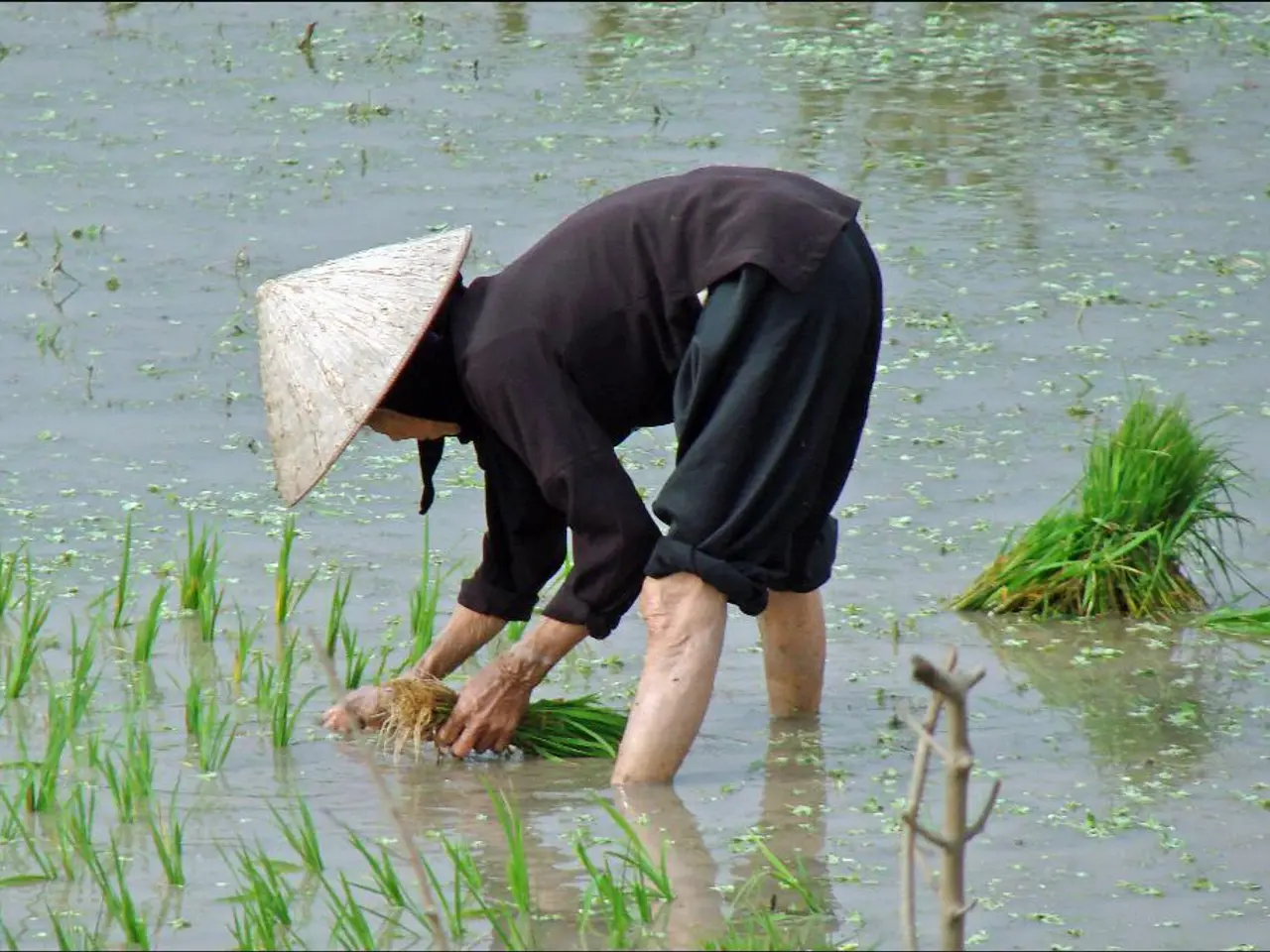Soil Transplantation of Germinated Plants: A Detailed Guide
=================================================================================
As spring approaches, many gardeners are eager to start growing their own vegetables, flowers, and herbs. However, transitioning seedlings from a semi-hydroponic (semi-hydro) environment to soil can be a delicate process. Here's a step-by-step guide to help you successfully make this transition.
Hardening Off Your Seedlings
Before transplanting, it's essential to harden off your seedlings. This process allows a plant to transition from a protected indoor or greenhouse environment to the harsh outdoor conditions of fluctuating spring temperatures, wind, and full sun exposure. Begin the hardening-off process seven to 14 days before the date you will plant your seedlings outdoors.
- Gradually expose your seedlings to outdoor conditions, increasing their exposure to sunlight, wind, and outdoor temperatures by about an hour each day.
- Choose a protected outdoor location that is protected from direct sunlight and wind.
- Introduce morning sun to your seedlings after two or three days of exposure to dappled shade.
- Increase the amount of time your seedlings spend outdoors until they can be left outdoors overnight. For heat-loving plants, wait until nighttime temperatures remain consistently above 60°F (15°C).
Transplanting Seedlings
Transplant your seedlings on a cloudy day, and be sure to water them well after planting. Choose a warm, overcast day in the early morning to transplant. Transplant when you see roots growing out of the drainage holes or circling around the root ball.
Preparing Your Garden Soil
Prepare your garden soil by loosening and amending it, removing rocks and weeds, and mixing in organic matter to improve moisture retention and drainage. This will create an ideal environment for your newly transplanted seedlings.
Transitioning from Semi-Hydroponics to Soil
When transitioning a plant from semi-hydroponics to soil, carefully remove the plant from the semi-hydro medium (such as LECA or other inert media) without damaging the roots. Rinse the roots thoroughly with clean water to remove all remaining particles. Inspect the roots and trim off any dead or damaged roots if necessary. Choose an appropriate soil mix for the plant species, ideally well-draining but capable of moisture retention. Plant the roots gently, ensuring roots are spread out and not compacted. Water the newly potted plant moderately and place it in a suitable environment (appropriate light, temperature, and humidity).
Avoid Overcrowding and Transplant Shock
Overcrowding seedlings can lead to competition for light, water, and nutrients, and may also cause damping off, a fungal disease. Most vegetable, flower, and herb seedlings can be transplanted once they have developed one or more sets of true leaves. Transplanting at the right growth stage allows the plant to grow bigger and stronger, reducing the risk of transplant shock.
Preventing Damping Off
Damping off is a fungal disease that can affect seedlings. To prevent damping off, ensure your seedlings are not overcrowded, and avoid watering the leaves. Instead, water the soil around the base of the plant.
Leggy Seedlings
Leggy seedlings are a sign they are stretching towards a light source. To prevent this, rotate your seedlings regularly to ensure they receive even light exposure.
Seedlings can quickly become root-bound, especially in small containers. To avoid this, transplant your seedlings before they become root-bound, and ensure they have enough room to grow in their new container.
By following these steps, you can successfully transition your seedlings from a semi-hydroponic environment to soil, allowing them to grow bigger and stronger in your garden.
[1] Semi-Hydroponics: A Guide for Gardeners [2] Transitioning Plants from Hydroponics to Soil [3] How to Transition Plants from Hydroponics to Soil
- Caring for plants that have been grown in a semi-hydroponic environment requires attention when transitioning them to soil, as it's crucial to follow a proper process to prevent transplant shock and ensure health-and-wellness.
- Transitioning a plant from science-based growing methods (like semi-hydroponics) to the home-and-garden lifestyle (in soil) requires careful handling, such as rinsing roots thoroughly, choosing an appropriate soil mix, and acclimating the plant to the new environment.
- As part of a holistic approach to lifestyle improvements (which includes home-and-garden care, health-and-wellness, and fitness-and-exercise), proper care in transitioning seedlings from semi-hydroponics to soil contributes to successfully growing a vibrant, sustainable garden, aligning with the principles of a well-rounded health-and-wellness regime.





